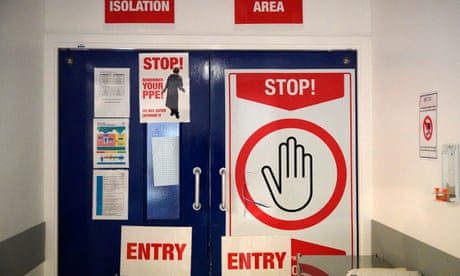Mandating improved ventilation and other forms of disease control in public buildings could save the UK economy billions of pounds each year through the prevention of ill health and its societal impacts, according to a report. It is the first study to comprehensively evaluate the health, social and economic costs of airborne infections, including Covid . Even without a pandemic, seasonal respiratory diseases cost the UK about £8bn a year in disruption and sick days, said the report by the Royal Academy of Engineering and the Chartered Institution of Building Services Engineers .
In the event of another severe pandemic within the next 60 years, the societal cost could be as high as £23bn a year. However, implementing improved ventilation in all buildings that require it could save at least £3bn a year – the figure could be higher as the calculation did not include wider estimates for improvements in health and wellbeing, such as increased alertness and productivity as a result of improved air quality. The greatest gains could be made by improving ventilation and other forms of infection control in public buildings such as schools, hospitals and local community buildings including libraries and care homes, where the larger share of transmission occurs.
“Yes, it costs money and yes, there are some complexities, but the benefits are there from an economic perspective,” said Cath Noakes, a professor of environmental engineering for buildings at the University of Leeds, who contributed to the report. “The pandemic has warned us of the risks that are around the corner and we need better buildings to help us live with Covid and future diseases. Now is the time for the major upgrade to our indoor environments.
” The report, which was commissioned by the chief scientific adviser, Sir Patrick Vallance, in 2021, made eight recommendations to enshrine infection resilience in building regulations and improve the health of indoor environments. “Probably the biggest change is that we need to up our game in terms of adherence to standards of safe and healthy building performance,” said Prof Shaun Fitzgerald at the University of Cambridge, a member of the working group that produced the report. Although new buildings must meet certain standards for air quality and ventilation during their design and construction, they are not necessarily checked to ensure fans, filters and windows continue to operate as intended, or if a building’s use changes over time.
Sign up to First Edition, our free daily newsletter – every weekday morning at 7am BST The report was welcomed by Vallance, as well as those who have campaigned for improved air quality during the pandemic. Vallance said: “The Covid-19 pandemic has made clear how important infrastructure and the built environment are for our health. I hope this report encourages the coordinated system-wide approach, collaboration and innovation required between government, academia and industry to deliver the transformational change recommended.
” Dr Stephen Griffin, a virologist at the University of Leeds and a member of Independent Sage, said: “We need to achieve the same sort of standards for air as we have for water. We don’t tolerate dirty water any more because we know how damaging cholera used to be. Let’s let’s do the same for air.
”.
From: theguardian
URL: https://www.theguardian.com/society/2022/jun/13/improved-disease-control-public-buildings-save-uk-billions



